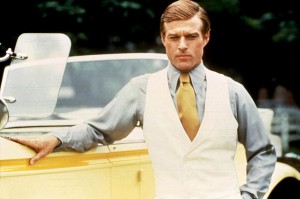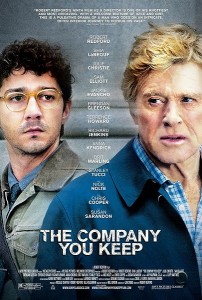Captain America: The Winter Soldier
Posted on April 3, 2014 at 6:00 pm

This is how you make a superhero movie. Director brothers Joe and Anthony Russo are best known for sitcoms with few but passionate fans (“Community,” “Happy Endings,” “Arrested Development”) and the underrated crime comedy “Welcome to Collinwood.” That is not the kind of credential that usually leads to a big budget comic book movie. But they prove to be just what the doctor ordered, funny where it should be, exciting where it should be, smarter than it needs to be, and just plain fun. Plus, I may be late to the party, but now I totally get the shield thing now as offensive and defensive weapons and it is very cool.
This is the sequel to the WWII-era origin story, where Steve Rogers (Chris Evans) a 98-pound weakling, volunteered for a government experiment that turned him into a super-strong super-soldier. But he got frozen in a block of ice and was thawed out more than sixty years later in time to join “The Avengers.” the storyline continues Captain America’s adjustment to the 21st century. We first see him running around Washington D.C.’s monuments neighborhood, repeatedly lapping vet Sam Wilson (Anthony Mackie). Pretty soon, they’re talking some mild smack and Wilson is telling Rogers what he has to add to his catch-up list of cultural touchstones: Marvin Gaye’s Trouble Man. Also on the list “Star Trek/Wars” and Steve Jobs. Evans and Mackie have a natural chemistry that makes that scene very funny but also shows us how much both of them need a friend who understands what it’s like to be a soldier home from the war.
But then Captain is called into action again. Alongside the Black Widow, played by Scarlett Johansson, tough, smart, funny, and just a touch flirtatious, as she chats with Rogers about girls he might want to ask out while they trade blows with the bad guys. There’s a mission, a hijacked cargo ship (I kept looking for a captain-esque crossover from Captain Phillips). Straight-ahead Captain America, used to fighting Nazis and other incontrovertibly bad guys who dress the part, expects that the people on his side will treat him with the same trust and respect and integrity he gives them in return. But this is the 21st century, and it’s complicated.
Rogers knows how to follow orders and he knows how to fight. Now he must learn to understand who he is fighting and what he is fighting for. It’s one thing when the bad guy has a Red Skull and wants total world domination because he is a fascist. It is another when both the good guys and the bad guys wear suits and speak in tempered, diplomatic tones, and want total world domination because it is best for everyone. “Don’t trust anyone,” Nick Fury tells Rogers. And Rogers, used to trusting everyone (how many people today would allow the government to inject them with an experimental serum?), has to learn what that means.
And it is one thing to take on a dozen bad guys at a time, knowing none of them have superpowers. But here Rogers must face an assassin called The Winter Soldier, someone as strong as he is, someone without any of the second-guessing that comes from understanding the complexities of the situation, someone who cannot be reasoned with or argued with or appealed to. And someone Rogers knew and trusted in the past.
The easy chemistry between Cap, Sam, and Natasha/Black Widow adds depth and heart to the story. Natasha needs to learn to trust as Cap needs to learn when not to trust. “How do we know who the bad guys are?” Sam asks as they race into battle. “The ones who are shooting at us,” Cap tells him.
There is just enough depth and gloss and humor and heart to set off the action, gorgeously staged in and around Washington, D.C. The elevated Whitehurst Freeway along the Potomac River gets the super-fight it was built for and it is a beaut. Wait until you see what’s been going on under the Potomac. It was a whole other level of pleasure to see a movie that gets Washington’s geography right. Most important, this is a film that respects the genre and the audience. Captain America and his fans get the movie they deserve.
Parents should know that this film includes constant comic book, action-style, superhero violence with many characters injured and killed, guns, bombs, chases, crashes, explosions, weapons of mass destruction, discussion of genocide, torture, fights, and brief strong language.
Family discussion: If you were advising Captain America on cultural developments while he was gone, what would you suggest? What is the biggest problem he faces in trying to adjust to modern times? How do the plans under consideration here relate to current discussions on world affairs?
If you like this, try: “The Avengers” and the other Marvel superhero movies



